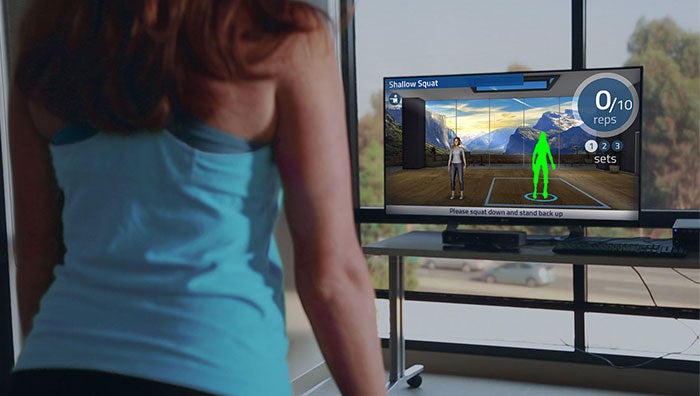Tech talk: Virtual rehab, smart sensors, and digital patient engagement
Virtual rehab program tracks patient progress remotely

A new virtual program at Yale New Haven Hospital allows patients to complete physical therapy in the comfort of their own home
Patients of Yale New Haven Hospital’s (YNHH) Center for Musculoskeletal Care have access to a virtual exercise rehabilitation program that can be used at home. YNHH is using a system called VERA (Virtual Exercise Rehabilitation Assistant) to help patients recover post-surgery. The system integrates several prescription rehabilitation exercises, an animated avatar coach, a 3-D imaging system for measuring movement and form, functional assessments, an intuitive dashboard for remote clinical review, automatic report generation and telemedicine capability.
Rehab patients using the system simply stand in front of the 3-D camera as the avatar demonstrates movements. VERA then detects, measures and analyzes the patient’s movement while providing helpful feedback. Actual YNHH therapists can monitor their patients' in-home progress remotely and discuss results via telemedicine.
Scientists develop smart sensors to help patients age in place
Three scientists at Washington University received a $1.77 million grant to develop and research smart home technology to help monitor the health and safety of senior patients.
Roschelle Fritz, assistant professor in the College of Nursing in Vancouver; Diane Cook, Huie-Rogers chair professor in the School of Electrical Engineering & Computer Science; and Maureen Schmitter-Edgecombe, the Herbert L. Eastlick professor in the department of psychology, received the grant from the National Institute of Nursing Research.
The three researchers will use the grant to design and pilot test smart-home technology with the ability to automatically identify significant health events for adults with chronic conditions. One example of what the technology they are working on can do, is a sensor that can detect motion in a patient’s home kitchen around the same time each night as the patient gets a glass of water before bed. The technology can flag that event as a normal pattern and send an alert to caregivers when that motion goes undetected during its normal occurrence, flagging that the patient may need assistance.
The grant recipients hope their research will help older patients to maintain functional independence longer and "age in place" through real-time assessment and intervention.
Hospital uses technology to transform the patient experience

Technology being built into the Helen L. and Martin S. Kimmel Pavilion is designed to transform the patient experience.
NYU Langone Health is keeping technology as a central component of its campus transformation. The health system is working on the new Helen L. and Martin S. Kimmel Pavilion, which will house the Hassenfeld Children’s Hospital and other services, and is scheduled to be completed in 2018.
According to Nader Mherabi, chief information officer, senior vice president and vice dean at NYU Langone Medical Center, technology will allow NYU Langone to transform nearly every aspect of the patient experience. In fact, Mherabi notes that it has invested “$400 million in the last seven years in a variety of IT initiatives and systems across the health system.”
One of those investments is NYU Langone’s MyWall system, which will be placed in every patient’s private room. The system comprises a 75-inch tablet-controlled screen that allows patients to control and engage in a number of activities, including:
- Find information on their care team
- Learn about their condition and how to manage it
- Call for assistance
- Communicate with loved ones via video and messaging
- Adjust room temperature and lighting
- Order meals
“Amidst the onrush of innovation, it is crucial to take the time to thoughtfully integrate new technologies to create a coherent digital and real-world experience and ensure that the new environment is, in fact, an improvement on the old,” Mherabi says.

